Monday, 21 March 2022 |
Please Refer to the Microfluidics Agenda for Programming Details for the Morning and Early Afternoon of Monday, March 21, 2022 and the Rapid Dx Agenda for Programming Details of the Late Afternoon of Monday, March 21, 2022 |
| |
Tuesday, 22 March 202208:00 | Morning Coffee, Pastries and Networking in the Exhibit Hall | |
Session Title: Technologies and Themes in the Organs-on-Chips Space 2022 |
| | 09:00 |  | Keynote Presentation Deconstructing and Reconstructing the Patient
Linda Griffith, Professor, Massachusetts Institute of Technology (MIT), United States of America
|
| 09:30 |  | Keynote Presentation A Translational Neurovascular Model to Study and Identify Therapeutic Targets for Alzheimer’s and Parkinson’s Disease
Roger Kamm, Cecil and Ida Green Distinguished Professor of Biological and Mechanical Engineering, Massachusetts Institute of Technology (MIT), United States of America
Alzheimer’s Disease and Parkinson’s Disease constitute a current and growing problem for our aging population, and while recent drugs, both FDA-approved and ones at various stages of clinical trial, show promise, nothing is yet available with demonstrated efficacy against either disease. Most of the current drugs in the pipeline have been developed by traditional methods using high-throughput screens and animal studies, without the benefit of relevant in vitro models of disease. Several approaches are now being developed, however, with both organ-on-chip and organoid-based models that show considerable potential in recapitulating human neurological disease. Here we present a model consisting of a microvascular blood-brain barrier with barrier properties comparable to those measured in vivo, consisting of a co-culture of endothelial cells, pericytes and astrocytes. Extensions to the current model including a neural compartment with healthy neurons and ones modified to express elevated levels of amyloid beta and a meningeal lymphatic system will be presented. The model is evaluated based on transcriptomic and functional data and demonstrated to be useful for assessing therapeutic delivery across the blood-brain barrier, disease modeling and drug screening. |
| 10:00 | 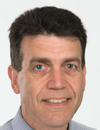 | Keynote Presentation Modeling COVID-19 Infection Kinetics in a High Throughput Human Primary Epithelial Airway Organ-on-Chip
Jeffrey Borenstein, Group Leader, Synthetic Biology; Director, Biomedical Engineering Center, Draper, United States of America
The COVID-19 pandemic has spurred unprecedented advances in vaccine development, but the identification and administration of efficacious therapeutics to treat critically ill patients has been less successful. A major limiting factor has been a lack of suitable preclinical tools for investigating mechanisms of COVID-19 infections, which are currently reliant upon various animal models and in vitro culture of immortalized cell lines. We report the first successful demonstration of robust and reproducible SARS-CoV-2 infection and viral replication in a human primary cell-based organ-on-chip, leveraging a recently developed tissue culture platform known as PREDICT96-ALI (Air-Liquid Interface.) These studies utilize human primary tracheobronchial epithelial cells derived from bronchoscopies performed on living donors, a capability that can ultimately lead to application of the technology to study patient-specific mechanisms of infection and therapeutic response, and the role of co-morbidities in these processes. This technology represents a powerful new pathway for modeling respiratory viral infections with high consequence pathogens, and an avenue for screening therapeutic candidates in a high throughput platform. |
| 10:30 | Mid-Morning Coffee Break and Networking | 11:00 | 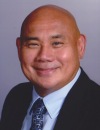 | Keynote Presentation The NIH Microphyiological Systems Program: In Vitro 3D Models for Safety and Efficacy Studies
Danilo Tagle, Director, Office of Special Initiatives, National Center for Advancing Translational Sciences at the NIH (NCATS), United States of America
Approximately 30% of drugs have failed in human clinical trials due to adverse reactions despite promising pre-clinical studies, and another 60% fail due to lack of efficacy. A number of these failures can be attributed to poor predictability of human response from animal and 2D in vitro models currently being used in drug development. To address this challenges in drug development, the NIH Tissue Chips or Microphysiological Systems program is developing alternative innovative approaches for more predictive readouts of toxicity or efficacy of candidate drugs. Tissue chips are bioengineered 3D microfluidic platforms utilizing chip technology and human-derived cells and tissues that are intended to mimic tissue cytoarchitecture and functional units of human organs and systems. In addition to drug development, these microfabricated devices are useful for modeling human diseases, and for studies in precision medicine and environment exposures. Presentation will elaborate in the development and utility of microphysiologicals sytems and in the partnerships with various stakeholders for its implementation. |
| 11:30 |  | Conference Chair Improving Model Quality and Reliability by Combining Organoid Technology with Organ-on-a-Chip Systems
Peter Ertl, Professor of Lab-on-a-Chip Systems, Vienna University of Technology, Austria
Organoid technology and in particular embryonic stem cell (ESC) models are of great interest in biomedical research because they provide deeper insights into e.g. neurogenesis and early mammalian brain development. Despite their great scientific potential, the reliable establishment of size-controlled spheroids and three-dimensional embryoid bodies remains a major challenge. The current lack of standardization, robustness and comparability is further l limiting a broader application and translation of stem cell technology. To overcome these limitations a microfluidic biochip array was designed and employed to automate cell loading, establish size-controlled organoids and differentiation protocols using murine P19 embryoid bodies. |
| 12:00 | Networking Lunch in the Exhibit Hall with Exhibitors and Conference Sponsors | |
Session Title: Organoids and Tissue Chips |
| | 13:00 | Bioengineering the Inflammatory and Degradative Cross Talk in Arthritic Diseases with Patient-derived Chondro-synovial Joint-on-a-chip Systems
Mario Rothbauer, Principle Investigator, Medical University of Vienna, Austria
Arthritic musculoskeletal diseases such as rheumatoid arthritis (RA) and osteoarthritis (OA) concern great parts of our global population. The communication of multiple tissues during onset and progression is characterized by inflammatory as well as degradative molecular processes that can in strong pathologies lead to join replacement surgery. The inflammatory and degradative interaction of joint tissues plays a vital role to aggravate tissue degradation in both arthritic diseases. The first half of the talk will cover the development of a chondro-synovial joint-on-a-chip system using patient-derived organoids and discuss how to develop an animal- and animal-product-free system with regards to serum supplements and biomatrices. The second half will outline the advances and progress made in modelling an authentic patient tissue-like osteoarthritis phenotype at architectural and molecular level using chondro-synovial joint-on-a-chip systems. | 13:30 | 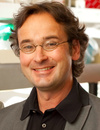 | Keynote Presentation Using Organoids to Re-Enact the Destruction of Human Beta cCells and Probe Novel Ways to Protect Them
Matthias von Herrath, Vice President and Senior Medical Officer, Novo Nordisk, Professor, La Jolla Institute, United States of America
Replacement of beta cell function through stem cell derived islets has advanced tremendously in the recent years with the prospect of providing a potential cure for many patients. However, newly implanted islets are unfortunately still subject to allo-immunity and recurring autoimmunity. To protect the cells and to circumvent the need for full immune suppression, which can have many adverse effects, various strategies are being used to stealthen the new islets. As there are many possibilities and human trials are lengthy and complex, we built an organoid-based 3D model to re-enact the events that lead to allo- and auto-immune destruction of beta cells together with the company In Sphero. This model allows for functional and quantitative readout of beta cell function on a rather continuous basis and thus can be an eminent tool to prioritize critical steps for a clinical translational strategy and define, which changes are needed to make stem cell derived islets immune evasive. |
| 14:00 | 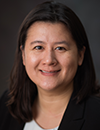 | Keynote Presentation Modeling Breast Cancer Development and Progression Using Patient-derived Organoids
Jennifer Rosenbluth, Assistant Professor, University of California-San Francisco, United States of America
Breast organoids can preserve multiple complex cell states of both the normal mammary gland and breast tumors. We describe our efforts to develop biobanks of normal and high risk breast organoids as well as breast tumor organoids. These organoids can yield insights into rare, aggressive subtypes of breast cancer and can be used to screen anti-cancer compounds. |
| 14:30 | 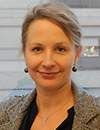 | Keynote Presentation Novel Organoid Models for the Study of Hormone Positive Breast Cancer
Taru Muranen, Assistant Professor of Medicine, Beth Israel Deaconess Medical Center and Harvard Medical School, United States of America
We have been developing novel co-culture models of primary patient-derived tumor organoids with matching primary cancer-associated fibroblasts to investigate tumor-stroma crosstalk in hormone receptor positive breast cancer. |
| 15:00 |  | Keynote Presentation Cellular Dynamics and ‘MOrPF-genesis’ in Biofabrication and Bioprinting
Yan Yan Shery Huang, Professor of BioEngineering, University of Cambridge, United Kingdom
Dynamic and time-dependent processes are inherent in living matters. With the aim to fabricate advanced biological systems and products, it is important to consider how cells dynamically interact with their ‘biofabrication’ protocol and environment. This talk will focus on three example cases. First, it will present process visualization of cell extrusion deposition through a high-resolution nozzle. In this context, we observed the motions of cells were overwhelmed by cellular re-organization events in a nozzle, including aggregation and sedimentation. Thus, the cells do not follow the flow paths purely driven by a laminar fluid flow within a narrow tip. In the second example, the talk will present how cells could dynamically adjust their shapes during migration, in response to different microfibre patterns from straight to curly. Key morphological features such as the variation of cells’ minor axis were identified for understanding cell migration in fibril matrices. In the third example, it will present how integrating self-assembly and biofabrication could lead an organoid engineering approach termed Multi-Organoid Patterning and Fusion (MOrPF). MOrPF is used to assemble scaffold-free macroscale airway tubes, leading to flowable organoid-on-a-chip, and branching tubular structures. Together, our studies might provide guiding principles for optimizing biofabrication processes of cell-laden constructs. |
| 15:30 | Close of Programming on Day 2 of the Conference for this Organoids and Organ-on-a-Chip Track |
|
